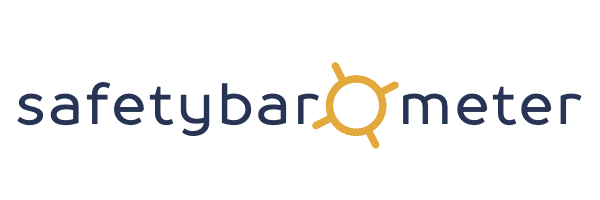
Sharing Best Practices
Effective Strategies for Organizations
In the fast-changing manufacturing sector, sharing best practices is essential. It encourages continuous improvement, promotes safety, stimulates innovation and saves time and resources. Moreover, it ensures well-informed employees and promotes collaboration, leading to competitive advantage and higher customer satisfaction. In essence, it is a powerful catalyst for organisational growth and excellence. But our industry is also heavily influenced by a silo mentality. Sharing key information comes with a number of challenges.
The true effectiveness of sharing best practices depends on the methods used; it is the approach that determines whether these challenges become stumbling blocks or stepping stones.

The current state of practice
In the field of manufacturing, sharing best practices is a multifaceted process that includes everything from safety protocols to efficiency strategies and quality control measures. These best practices are the wisdom accumulated by companies over time and represent the most effective ways to achieve objectives while complying with industry regulations and standards.
How best practices are shared internally depends largely on the type of manufacturing company. In the chemical sector, for example, much emphasis is placed on sharing safety procedures because of the high risk of hazardous materials. This sharing is often formalised through rigorous training programmes and detailed procedure documentation. In contrast, the construction sector may place more emphasis on efficiency and time management, with knowledge often transferred through on-site internships and coaching of colleagues. The food production sector, in turn, prioritises sharing quality control and compliance practices because of the direct impact on public health.
In all these sectors, there are common challenges and considerations. The accuracy and relevance of the information shared are paramount; outdated or incorrect information can lead to costly mistakes or even accidents. In addition, the method of sharing is crucial – while digital platforms can offer easy and wide dissemination, they require a level of digital literacy that not all employees possess. Conversely, more traditional methods, such as printed manuals or face-to-face meetings, may not capture the nuances of complex processes and may not be as easily updated.
HSSE specialists must ensure that the sharing of such knowledge is not only thorough and up-to-date, but also accessible and engaging to ensure that it is understood and implemented by all employees and contractors. Effectiveness depends on the dissemination method, industry-specific focus and ongoing management of shared knowledge.
Newsletters
Newsletters are often used in the dissemination of best practices. Usually in the form of updates that include summaries of recent safety incidents, introductions of new operational procedures or highlights of process improvements.
This can be a good way to share best practices if they are designed to attract attention – with clear, concise language and compelling visuals. The use of infographics, for example, can distil complex information into an easily digestible format that can be understood at a glance. an advantage is that the readership of these newsletters extends beyond employees; they often reach external contractors and other third parties who work closely with the company.
But the challenge remains ensuring that these newsletters are not only opened, but also read and absorbed. Metrics such as open rates and click-through rates can provide insight into how engaging the newsletters are, but the real test lies in observable changes in the workplace. Do employees talk about the content? Do they apply the insights in their daily routines? This is where the real value of newsletters as a medium for sharing best practices is realised.
Helpful tip
Incorporate interactive elements. For example, including a quick quiz or a feedback section within the newsletter can engage readers and encourage them to reflect on the material. This not only increases the likelihood that they will absorb the information but also provides valuable feedback to the company on the clarity and relevance of the content shared.
Digital Systems
These systems, when leveraged effectively, can transcend traditional barriers, fostering an environment where knowledge and expertise flow as seamlessly as the assembly line itself.
In the manufacturing sector, Enterprise Resource Planning (ERP) systems, Manufacturing Execution Systems (MES), and Quality Management Systems (QMS) are integral for sharing best practices across operations, production, and compliance. Contractor Management Systems are particularly crucial for extending these practices to third-party contractors, ensuring they meet the company’s safety and operational standards. Together, these systems form a cohesive network for maintaining high-quality standards and efficient collaboration with all stakeholders in the manufacturing process.
Yet the introduction of digital systems is not without its challenges. The digital divide can lead to differences in access and technological proficiency between employees. To address this, HSSE specialists must prioritise digital literacy and ensure that all employees, regardless of background, can navigate these systems with confidence. Training sessions, user-friendly interfaces and readily available support can mitigate these challenges.
Training Sessions
In the manufacturing landscape, Training Sessions are pivotal for disseminating best practices, particularly when integrated with digital systems like Learning Management Systems (LMS) that track progress and engagement. These sessions, often supported by interactive e-learning content, ensure that both employees and contractors are proficient in the latest operational, safety, and quality standards, fostering a culture of continuous improvement and compliance.
Traditional training sessions in manufacturing offer direct interaction but face logistical challenges and high costs, especially when dealing with geographically dispersed teams. The quality of training can vary, leading to uneven implementation of best practices. These sessions can also lack engagement compared to interactive digital learning methods, which can affect information retention.

Digital solutions such as Onyx One offer intuitive, modular software that streamlines the management and automatic updating of certifications and expiry dates and addresses the limitations of traditional training methods.
With its fully digital process, Onyx One ensures that best practices can be disseminated consistently and effectively.
If you would like to see this innovative contractor management system in action and discover how it can improve your training strategy,
book a short demo in Nikolai’s calendar now!
